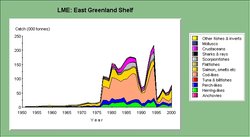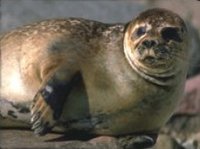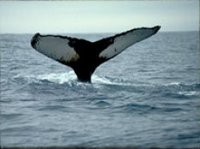East Greenland Shelf large marine ecosystem
Contents
- 1 Introduction Location of the East Greenland Shelf Large Marine Ecosystem. (Source: NOAA (East Greenland Shelf large marine ecosystem) )
- 2 Productivity
- 3 Fish and Fisheries
- 4 Pollution and Ecosystem Health
- 5 Socioeconomics
- 6 Governance
- 7 Articles and LME VolumesBuch, E., S.Aa. Horsed, and H. Hovgard, 1994. Fluctuations in the occurrence of cod in Greenland waters and their possible causes. ICES Mar. Sci. Symp. 198:158-174.FAO, 2003. FAO (East Greenland Shelf large marine ecosystem) Trends in oceanic captures and clustering of large marine ecosystems—2 studies based on the FAO capture database. FAO fisheries technical paper 435. 71 pages. * NOAA. 1991. NOAA Report of the ad hoc Committee on Large Marine Ecosystems. NOAA Technical Memorandum NMFS-F/NEC-92, 19p. * Prescott, J.R.V. 1989. The political division of large marine ecosystems in the Atlantic Ocean and some associated seas. In K. Sherman and L.M. Alexander, eds. Biomass Yields and Geography of Large Marine Ecosystems. AAAS Selected Symposium 111. Westview Press, Boulder CO. 395-442. ISBN: 0813378443. * Skjordal, H.R., T.T. Noji, J. Giske, J.H. Fossaa, J. Blindheim, and S. Sundby, 1993. Mare Cognitum. Science Plan for reserch on marine ecology of the nordic seas (Greenland, Norwegian, Iceland Seas) 1993-2000. A regional GLOBEC program with contributions also to WOCE and JGOFS, Inst. Mar. Res. Bergen, Norway, 162 p.
- 8 Other References
Introduction Location of the East Greenland Shelf Large Marine Ecosystem. (Source: NOAA (East Greenland Shelf large marine ecosystem) )
The East Greenland Shelf Large Marine Ecosystem (LME)is characterized by its Subarctic climate. It is characterized by a seasonal ice cover and by marked fluctuations in salinity, temperature and phytoplankton, factors that can contribute to variations of annual catches of cod and small pelagics. The LME extends along Greenland’s eastern coast to the Eirik Ridge. It is influenced by the cold East Greenland Current, which flows south along the coast from the polar area. A recent Global International Waters Assessment (GIWA) publication details the Greenland Shelf LMEs. Particular LME book chapters and articles pertaining to this LME include Skjoldal et al, 1993.
Productivity
The continental shelf varies in width, from 750 kilometers (km) in the north to 75 km in the south. A ridge separates Greenland from Iceland. There is a large number of fiords. Changes in sea and air temperature are the principal physical driving forces of this LME. Climatic variability causes large interannual variability in ice and hydrographic conditions. This, in turn, affects plankton production and fish recruitment. Due to the cover of ice for most of the year, which inhibits the penetration of light, the East Greenland Shelf LME is considered a Class III, low productivity (<150 grams of Carbon per meter square per year) ecosystem based on SeaWiFS global primary productivity estimates. The melting of the ice in the summer has significant effects on ecological conditions, causing large amounts of nutrient salts to be transported into the waters around East Greenland. Owing to these climatic factors and to the high latitude of the region, the seasonal phytoplankton production is of short duration and of limited extent. Primary production is conveyed efficiently to higher trophic levels and supports large populations of fish, marine mammals and seabirds (gulls, common eider, polar guillemot).
Fish and Fisheries
 LME East Greenland Shelf. (Source: NOAA)
LME East Greenland Shelf. (Source: NOAA) The Food and Agriculture Organization (FAO) 10-year trend shows a very jagged profile of peaks, booms and busts. The catch was less than 100,000 tons in 1990, more than 600,000 tons in 1993, down to less than 100,000 tons in 1995, followed by a peak in 1996 of more than 700,000 tons (see FAO, 2003). The most important species group in terms of shelf catches is pelagic fishes. A stock of some commercial significance was cod, once central to Greenland’s economy. A cod collapse took place in the early 1990s. The catch had fallen to below 4,000 tons in 1996. The fluctuations of cod stocks have been linked to changes in sea and air temperature (see Buch and Hovgard, 1994). There are decreased catches of capelin. Overfishing and its effects on stock size and stock interactions appears to coincide with climatically-driven variability. Shrimp (Pandalus borealis) is exported. Greenland halibut, Norway haddock, catfish, Atlantic halibut, salmon and char are important to the local economy. Greenland's fishing industry tries to balance the possibilities offered by modern fishing technology with the need to sustain the LME’s natural resources. The near-shore quota system differs from the far-shore system for shrimp, cod and Greenland halibut. The University of British Columbia Fisheries Center has detailed fish catch statistics for this LME. Marine mammals (5 species of seal, walruses and whales) are essential for the survival of the traditional hunting communities. Meat is traded locally. The whaling industry led to the decimation of several whale species in the region. The recovery of some of the overexploited species has been very slow. On the other hand, the fin whale and the minke whale have recovered well. Legal measures protect a number of marine species.
Pollution and Ecosystem Health
 (Source: NOAA)
(Source: NOAA) The International Cod and Climate Change Program (CCC) studies the response of different cod populations to climate changes in various regions of the cod’s North Atlantic range. See a report by the OSPAR Commission that describes the main human pressures in a region of the Arctic Ocean that includes the east coast of Greenland. Owing to the LME’s remoteness and low population density, environmental conditions within it are generally good. However, certain activities such as fisheries give cause for concern. In terms of oil pollution, the difficulties associated with taking remedial actions in a cold environment such as this one are a cause for concern. Levels of PCB and DDT are quite high in both biotic and abiotic media around eastern Greenland. For more information about pollutants in the Arctic region including Greenland, see the Artic Monitoring and Assessment Programme.
Socioeconomics
 (Source: NOAA)
(Source: NOAA) The population is extremely limited: about 3,500 people live in the 2 towns and 9 settlements of Greenland’s East Coast. Many are from the traditional Inuit culture. The first Europeans arrived in Angmagssalik only about 100 years ago. The traditional Inuit culture continues to play an important role in everyday life. The Inuit dependence on fishing and on the harvesting of wildlife formed the basis of their society, culture and economy. Today, the local population continues to be highly dependent on the fish, crustaceans and mussels obtained from the sea, and on the hunting of seals, whales, polar bears and other prey. Fishing accounts for 95 percent of total exports. Cod was previously central to Greenland’s economy, but the fishery collapsed in the 1990s. The thick ice cover that forms during the winter breaks down in the summer into huge ice chunks that drift down along the coast and cause huge problems for shipping. Certain mineral deposits may be of future economic interest, including the oil fields near Jameson Island in East Greenland. There are diamond, gold, niobium, tantalite, uranium and iron deposits on the island.
Governance
Greenland was once a part of Denmark, but has since 1979 moved towards independence. The Greenland Institute of Natural Resources is responsible for providing scientifically sound management advice to the Greenland government. Issues that have been identified as important for the management of this LME include the need to improve the scientific basis for linking climatic variability and climate change to the chemical and biological processes and fishing pressure in this LME.
Articles and LME VolumesBuch, E., S.Aa. Horsed, and H. Hovgard, 1994. Fluctuations in the occurrence of cod in Greenland waters and their possible causes. ICES Mar. Sci. Symp. 198:158-174.FAO, 2003. FAO (East Greenland Shelf large marine ecosystem) Trends in oceanic captures and clustering of large marine ecosystems—2 studies based on the FAO capture database. FAO fisheries technical paper 435. 71 pages. * NOAA. 1991. NOAA Report of the ad hoc Committee on Large Marine Ecosystems. NOAA Technical Memorandum NMFS-F/NEC-92, 19p. * Prescott, J.R.V. 1989. The political division of large marine ecosystems in the Atlantic Ocean and some associated seas. In K. Sherman and L.M. Alexander, eds. Biomass Yields and Geography of Large Marine Ecosystems. AAAS Selected Symposium 111. Westview Press, Boulder CO. 395-442. ISBN: 0813378443. * Skjordal, H.R., T.T. Noji, J. Giske, J.H. Fossaa, J. Blindheim, and S. Sundby, 1993. Mare Cognitum. Science Plan for reserch on marine ecology of the nordic seas (Greenland, Norwegian, Iceland Seas) 1993-2000. A regional GLOBEC program with contributions also to WOCE and JGOFS, Inst. Mar. Res. Bergen, Norway, 162 p.
Other References
- Hansen, P.M., 1949. "Studies on the Biology of the Cod in Greenland Waters," Rapp. P.v. Reun. Cons. Int. Explor. Mer 123: 1-83.
- Hardy, R.J., Bamber, J.L., and Orford, S. The delineation of major drainage basins on the Greenland ice sheet using a combined numerical modelling and GIS approach. Hydrological Processes.
- Horsted, S.Aa., 1989. Some features of oceanographic and biological conditions in Greenland waters. In: L. Rey and V. Alexander (eds.). Proceedings of the sixth conference of the comite arctique international 13-15 May 1985. E.J. Brill. Leiden. 456-476. ISBN: 9004082816.
- Stevens, D.P., 1991. A numerical ocean circulation model of the Norwegian and Greenland Seas. Prog. Oceanog., 27, 365-402.
| Disclaimer: This article is taken wholly from, or contains information that was originally published by, the National Oceanic and Atmospheric Administration (NOAA). Topic editors and authors for the Encyclopedia of Earth may have edited its content or added new information. The use of information from the National Oceanic and Atmospheric Administration (NOAA) should not be construed as support for or endorsement by that organization for any new information added by EoE personnel, or for any editing of the original content. |